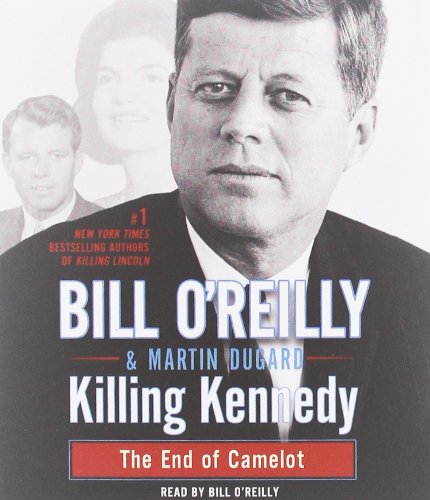
A riveting historical narrative of the shocking events surrounding the assassination of John F. Kennedy, and the follow-up to mega-bestselling author Bill O’Reilly’s Killing Lincoln.
More than a million readers have thrilled to Bill O’Reilly’s Killing Lincoln, the page-turning work of nonfiction about the shocking assassination that changed the course of American history. Now the anchor of The O’Reilly Factor; recounts in gripping detail the brutal murder of John Fitzgerald Kennedy–and how a sequence of gunshots on a Dallas afternoon not only killed a beloved president but also sent the nation into the cataclysmic division of the Vietnam War and its culture-changing aftermath.
In January 1961, as the Cold War escalates, John F. Kennedy struggles to contain the growth of Communism while he learns the hardships, solitude, and temptations of what it means to be president of the United States. Along the way he acquires a number of formidable enemies, among them Soviet leader Nikita Khrushchev, Cuban dictator Fidel Castro, and Alan Dulles, director of the Central Intelligence Agency. In addition, powerful elements of organized crime have begun to talk about targeting the president and his brother, Attorney General Robert Kennedy.
In the midst of a 1963 campaign trip to Texas, Kennedy is gunned down by an erratic young drifter named Lee Harvey Oswald. The former Marine Corps sharpshooter escapes the scene, only to be caught and shot dead while in police custody.
The events leading up to the most notorious crime of the twentieth century are almost as shocking as the assassination itself. Killing Kennedy chronicles both the heroism and deceit of Camelot, bringing history to life in ways that will profoundly move the reader. This may well be the most talked about book of the year.

Losing time, wasting money The corner stone of this book is this: Kennedy was killed by Oswald. End of story.How does O’Reilly know? Because he read the Warren Report.Fine. For a lone killer to have fired only three shots in the imparted six seconds, the Commission had to create the single-bullet theory: one bullet, seven wounds, two broken bones, one right turn, one left turn… So magic that the bullet is found in pristine condition on a stretcher. Are you ready to believe that? Well, in…
SORRY BILL I was working in downtown Washington, D.C. on November 22,1963, the day John F. Kennedy was killed. A few days later, I stood at Pennsylvania Avenue in bright November sunshine and watched an unforgettable funeral procession. A team of white horses pulled a two wheeled artillery cart carrying JKF’s flag-draped casket, followed by a black, saddled but riderless horse. Boots, placed reversed, were in the stirrups. An unhurried, muffled drumbeat accompanied the inexpressible sensation of grief…